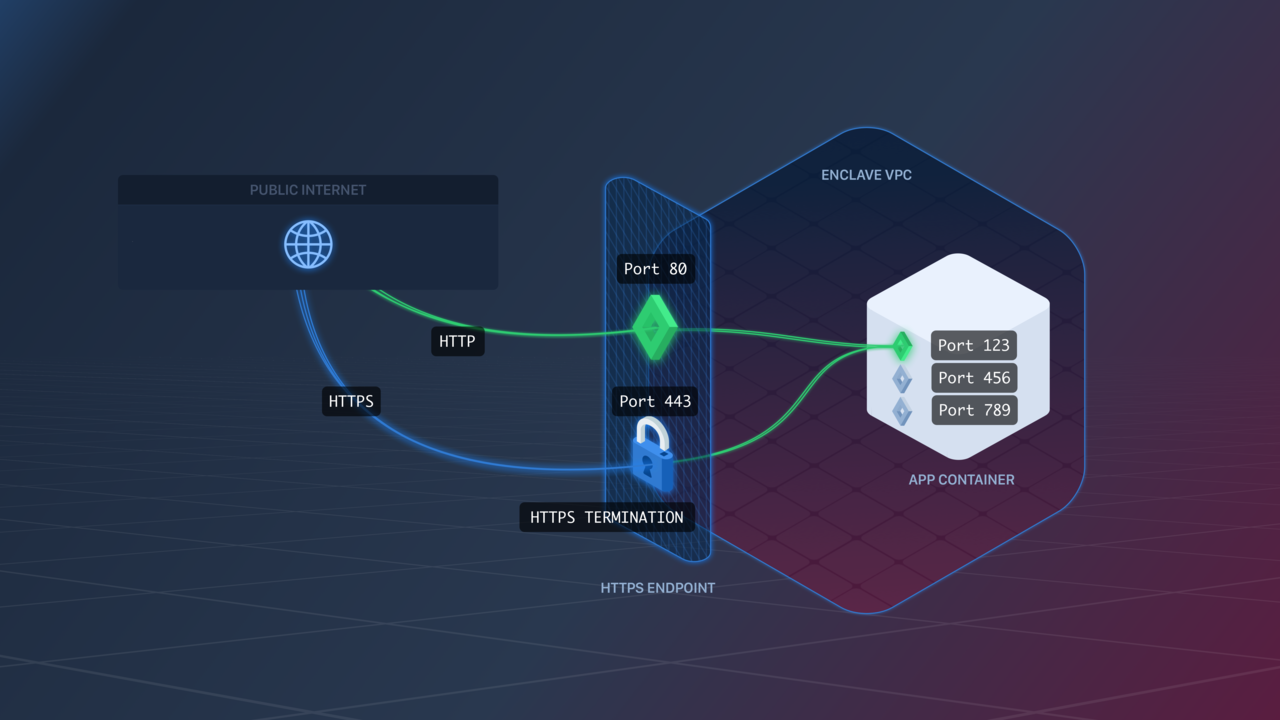Core Concepts
Reference
Troubleshooting
Feedback
HTTP(S) Endpoints

HTTP(S) Endpoints can be created in the following ways:
- Using the
aptible endpoints:https:createcommand, - Using the Aptible Dashboard by:
- Navigating to the respective Environment
- Selecting the Apps tab
- Selecting the respective App
- Selecting Create Endpoint
- Selecting Use a custom domain with Managed HTTPS
Like all Endpoints, HTTP(S) Endpoints can be modified using the aptible endpoints:https:modify command.
Traffic
HTTP(S) Endpoints are ideal for web apps. They handle HTTPS termination (and optionally redirect HTTP traffic to HTTPS), and pass it on as HTTP traffic to your app Containers.
HTTP(S) Endpoints can recieve client connections from HTTP/1 and HTTP/2, but it is forced down to HTTP/1 through our proxy before it reaches the app.
Container Port
When creating an HTTP Endpoint, you can specify the container port the traffic should be sent to. Different Endpoints can use different ports, even if they're associated with the same Service.
If you don't specify a port, Aptible will pick a default port for you. The default port Aptible picks is the lexicographically lowest port exposed by your Image. For example, if your Dockerfile contains EXPOSE 80 443, then the default port would be 443.
It's important to make sure your app is listening on the port the Endpoint will route traffic to, or clients won't be able to access your app.
Zero-Downtime Deployment
HTTP(S) Endpoints provide zero-downtime deployment: whenever you deploy or restart your App, Aptible will ensure that new containers are accepting traffic before terminating old containers.
📘 For more information on Aptible's deployment process, see Releases.
Keep reading: